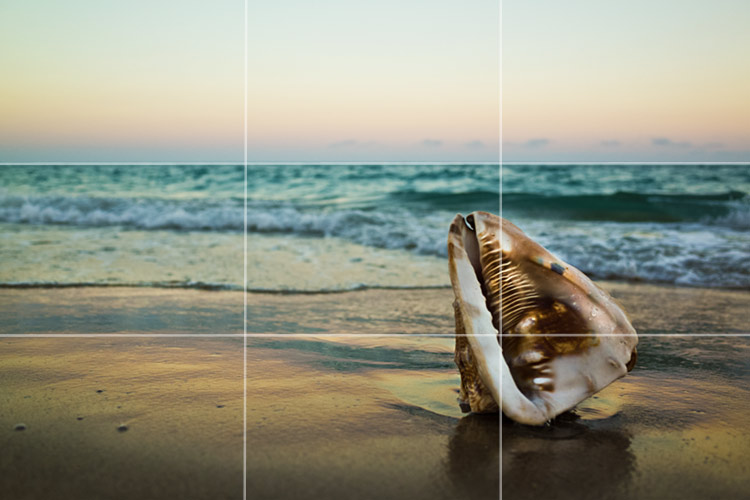We may earn a commission when you purchase through affiliate links. Learn more.
Known as the Rule of Thirds, the so-called rule is more of a loose guideline for visual artists that divides an image into a grid with nine segments of equal size with two horizontal lines and two vertical lines, much like a tic-tac-toe board.
The Rule of Thirds states that a photograph has the greatest impact and ability to capture a viewer’s attention when your image subject and important foreground and background elements are placed in the composition near the junction of these lines. Horizons are best placed along one of the two horizontal lines, rather than in the center of a photo. Vertically oriented subjects, like people standing, are best placed along one of the vertical lines, with the person’s back closest to the edge of the photo, leaving room ahead of them in the direction they’re facing.
The Rule of Thirds is not an infallible law, but it is a good point of reference to keep in mind, just as artists have done for hundreds of years. Excellent photos can certainly be taken with your subject or horizon centered in the middle of the frame, but generally you’ll find that the Rule of Thirds really does improve the composition and balance of a photograph.
If you’re considering deviating from the Rule of Thirds, be conscious and aware of where you’re placing your scene elements, such as the subject or main focal point, any secondary subjects in the foreground and background, and the horizon. If you’re mindful of the place everything in your scene is in, you’ll find that your images will have a greater impact on the viewer.
To assist you with composing an image with the Rule of Thirds in mind, you’ll find that many DSLR and mirrorless cameras allow you to overlay a Rule of Thirds style grid over the LCD display screen when using Live View. On Canon cameras like the Canon T6i and Canon 70D, you can turn on the grid display by pressing the menu button and scrolling through the menu screens until you get to the Live View settings — you’ll see a Grid display option that provides two grid overlay formats to choose from, a 3×3 Rule of Thirds grid, and a 6×4 grid that divides an image into even more segments.
On Nikon DSLR cameras like the Nikon D7200, pressing the info button while in Live View mode allows you to select a “framing guide” display, which display a grid that divides the image into quarters.
On Sony cameras like the Sony A7 II, there is a Custom Settings option labeled “Grid Line” to display an overlay of composition lines including a Rule of Thirds option.

